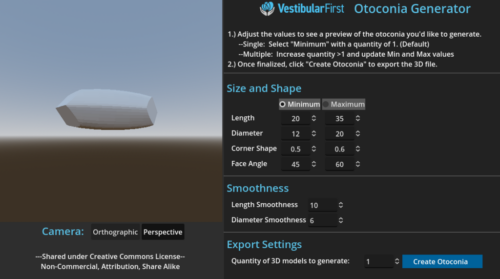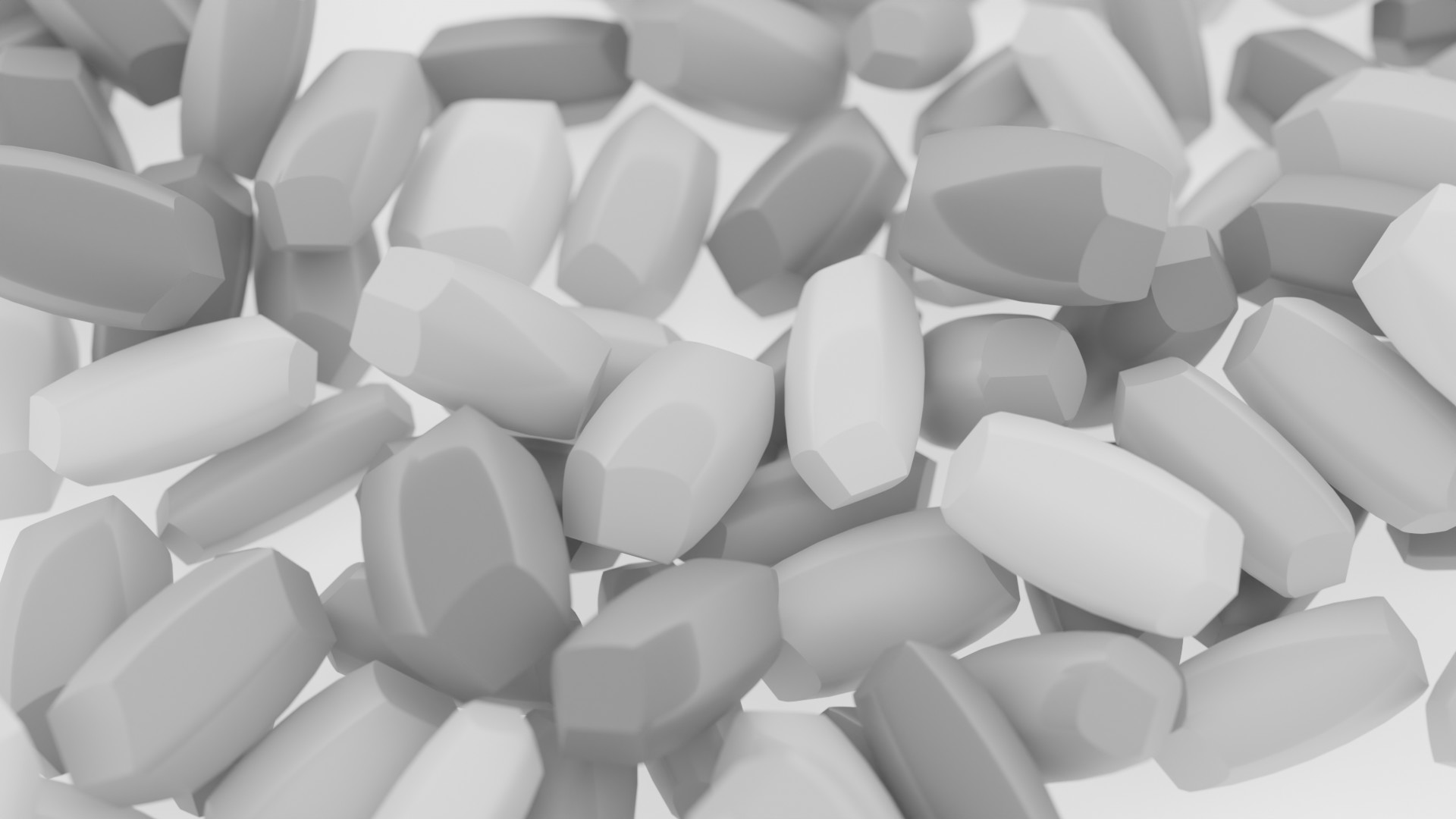How to Generate Otoconia/Otolith Models for 3D Printing and Research

Are you looking for anatomically accurate otoconia/otolith for your 3D modeling or research project? Look no farther than our Otoconia Generator! Our app allows you to generate either a single otoconia or multiple with variations very easily with just a few clicks. If you aren’t able to use this program, you can download some of our pre-generated 3D models.
Special thanks to researcher Leif Walther who studied in detail the inner ear crystals, also known as otoconia/otolith. His research article titled The Inner Structure of Human Otoconia shows in detail multiple cross-sections of otoconia which were used as reference images to make the base model.
License Details
We have issued these models under the Creative Common License model with the following restrictions:
- Non-Commercial – You are not allowed to sell this application or any of the models generated from it. Please contact us if you are interested in distributing this or the models commercially
- Attribution – You must give credit to Vestibular First if you use this application or generated models
- Share Alike – Any derivatives of this application or models must be shared with the same license terms stated here.
Step 1
Download Application
Currently the application is developed for Windows, but if there is enough interest in other platforms, we can create additional OS support. Please contact us if you would like this option.
Step 2
Run the Application
Everything is self-contained in the application, so all you need to do is double-click it to open it and run.
Step 3
Adjust the Size/Shape
Otoconia come in a wide variety of sizes and shapes, so please use the adjusters to make your perfect inner ear crystal. Please review the below settings to adjust your output:
Size and Shape
- Minimum/Maximum – Use these radio buttons to define the range of sizes you’d like to generate. If you only want to export a single crystal, leave it set to Minimum.
- Length: Defines how long the otoconia is lengthwise.
- Diameter: The width of the body can be defined here
- Corner Shape: This defines how sharp or round the hexagonal corners of the body are.
- Face Angle: This is the angle of intersection between the body and the crystal faces
Smoothness
- Length – Defines how many sections are used to define the length of the otoconia. Smoother geometry comes at the cost of increased computational and export times.
- Diameter – Defines how many sections are used to define the diameter of the otoconia. Smoother geometry comes at the cost of increased computational and export times.
Step 4
Export the Model(s)
- Adjust the number of otoconia you would like to generate and then click Create Otoconia
- Make sure wherever you use them you give attribution to Vestibular First so we can help raise awareness of the awesome inner workings of the inner ear!

